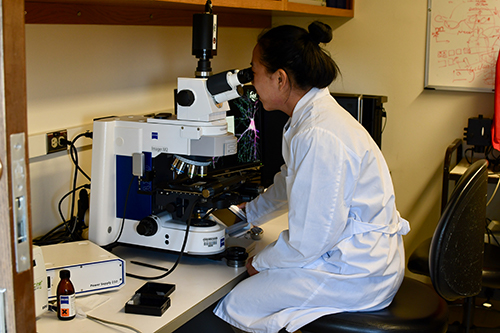Project 2: Cellular and Molecular Mechanisms of Cadmium Neurotoxicity

Members of the Xia lab (Project 2) work consistently to communicate with broad audiences about cadmium's effects as a neurotoxin. Regulatory agencies have yet to recognize that cadmium can have potent effects on cognition at relatively low doses, so getting this message out helps promote the UW SRP goal of protecting human health.
As one example, trainee Megumi Matsushita worked with research translation manager, Lisa Hayward to develop a synthesis of the science on cadmium as a neurotoxicant which she presented to the Collaborative on Health and the Environmental- Washington Partnership (CHE-WA).
Matsushita and trainee, Hao Wang have also led multiple lab tours, both on campus and virtually during the COVID-19 pandemic, presenting their research to groups like the Duwamish Valley Youth Corps and interns from Zero Waste Washington; BRANCH, a program run by the Urban Indian Health Institute and funded by the Center for Disease Control; and the National Institute of Environmental Health Sciences-funded SURE-EH program. All of these programs are aimed at serving underrepresented groups and first-generation college students/ graduates. More details about an example visit can be found here.
Dr. Zhengui Xia has worked to introduce concepts of environmental health to groups of researchers outside the field. As an example, she translated her results for a group of top Alzheimer’s researchers in 2018. She was one of the only presenters to introduce concepts of environmental health at a conference titled “Targeting Therapy of Alzheimer’s and Related Neurodegenerative Diseases” for top Alzheimer’s researchers. More details on the talk are available here.
Research translation effort for Project 2 are guided by a plan developed using a template from the American Association for the Advancement of Science and a research translation map based on the framework developed by NIEHS.

